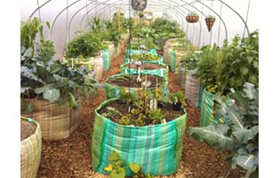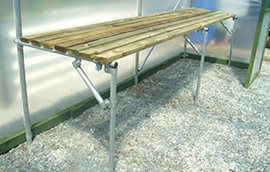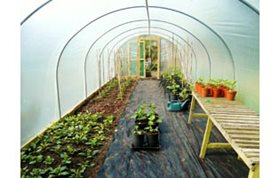More of us are growing our greens. With the rise in popularity of allotments, plus an increase in the number of vegan and vegetarian options that are available, it seems there is a trend towards plant-based diets and self-sufficient living.
Whether you are a seasoned gardener or you are just starting out, if you are one of the many who want to try new ways to grow your own produce, a polytunnel could be the perfect option. They protect your crops in cooler months, allowing you to plan out your growing season with confidence.
Read on for polytunnel layout tips to help you get started!
Polytunnel Layout: Inside Your Polytunnel
There are plenty of polytunnel sizes available for you to choose from, from those that are 6ft wide for the corner of your garden to the huge 30ft wide options that are suitable for those with lots of land. Choose the size that suits your needs and which best fits the area you have set aside for growing your crops.
Once you have selected the size to suit your needs and you have built it, you can then use our guide below to plan your polytunnel layout.
Plan Your Polytunnel Layout
 It is worth taking this time to plan out your polytunnel layout on paper before you do it for real. Plot out your blank canvas carefully as being able to move around easily inside is crucial for a successful and comfortable growing experience.
It is worth taking this time to plan out your polytunnel layout on paper before you do it for real. Plot out your blank canvas carefully as being able to move around easily inside is crucial for a successful and comfortable growing experience.
Map out where you want to place seedlings, add an area for storage space where you can stash your tools and pots, and find a spot for your hanging baskets.
The final set-up will depend on the size of your polytunnel, as well as what type it is. For example, if you have an allotment polytunnel it will look different to a larger commercial one.
Whatever the size or purpose behind your polytunnel, you will find that there are some desirable accessories and some essentials that you will need in order to produce a successful harvest, such as raised beds, staging, hanging baskets and grow bags.
Whether you have raised beds or staging will depend upon the condition of the soil you are using as well as the type of crops you are planting.
Raised Beds
If you want to add some raised beds, there are plenty of easy-to-build ones available that come in a selection of sizes designed to suit an array of crops. These are an ideal choice if you want to incorporate a different type of soil to your garden and allows you to concentrate one area on one type of plant, fruit or veg.
Staging
 Staging is ideal if you want to maximise the space you have as this lets you create levels. These levels allow you to plan out where you want to sow.
Staging is ideal if you want to maximise the space you have as this lets you create levels. These levels allow you to plan out where you want to sow.
For example, you may want to dedicate one tier to one type of veg so that it gets maximum light, while the plants below may not require as much light, so you can use the staging to block out the light for those ones. Trestle staging is also particularly useful as you can easily move your benches around to suit.
Polytunnel Pathways
Once you have plotted out where you want to place your staging, raised beds, pots and other features, it is time to look at the floor. When planning how many paths you will need, it is important to remember to leave some room to manoeuvre between crops.
 Generally you will have one or two paths. Smaller polytunnels generally have the room for one central path, while those tunnels greater than 10ft wide allow for the use of a double path system with crops growing in central beds and on each side of the polytunnel. Your aim is to maximise growing space, so keep this in mind when planning the width of the paths, ensuring you maintain a comfortable working space and access for wheelbarrows and wheelchairs.
Generally you will have one or two paths. Smaller polytunnels generally have the room for one central path, while those tunnels greater than 10ft wide allow for the use of a double path system with crops growing in central beds and on each side of the polytunnel. Your aim is to maximise growing space, so keep this in mind when planning the width of the paths, ensuring you maintain a comfortable working space and access for wheelbarrows and wheelchairs.
Change It Up
While some aspects of your polytunnel layout are likely to be fixed unless you take things out and start again, there are plenty of additions and changes you can make as you go along. Try moving hanging baskets around, re-thinking where you place the trestle staging bench and re-jigging your raised beds to make the most of the space you have.
Whatever way you choose to set out your polytunnel, you are sure to grow some spectacular crops if you plan your layout carefully.